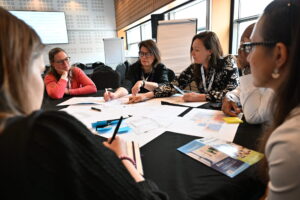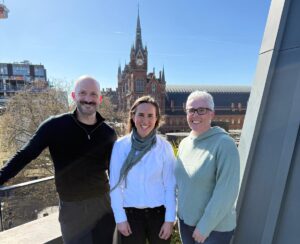By Charlotte Burrows, CEO, Design in Mental Health Network
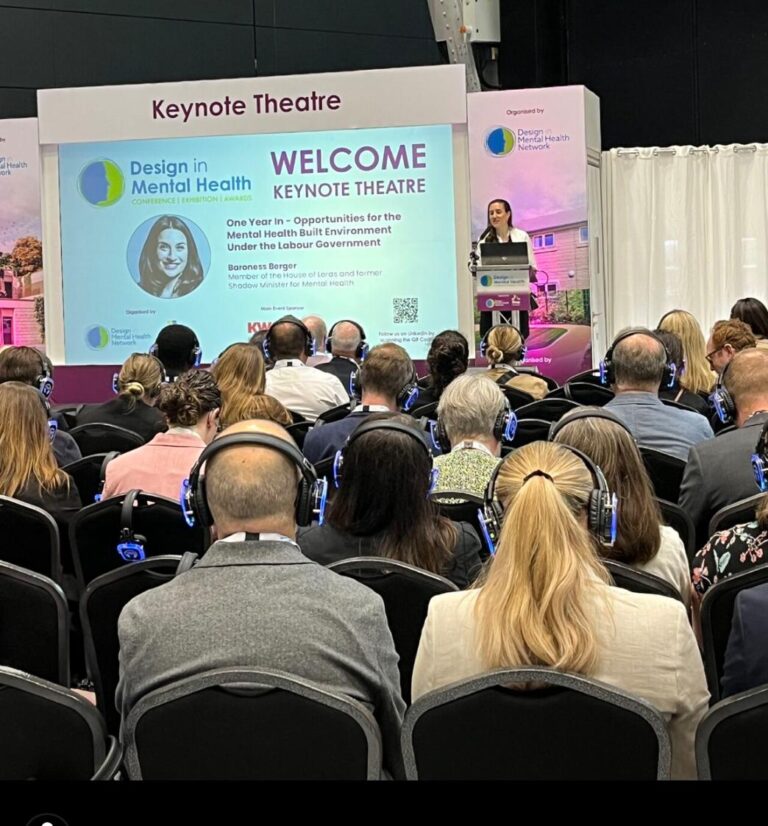
Just a few months into my role at the Design in Mental Health Network, I stood at the podium (looking out to an audience wearing headphones, silent-disco-style was undoubtedly a new experience) to welcome delegates to the 2025 Design in Mental Health Conference.
It was, for me, a moment of both pride and humility.
I was new, still listening, still learning, but already deeply moved by the commitment and compassion that runs through this network. My focus is on listening to our members, understanding our stakeholders, and learning from the community. So, spoiler alert, no big announcements.
However, after two days of powerful conversations, thought-provoking sessions, and meeting so many of you face-to-face, I do want to share some reflections on what I heard and what I’m taking forward.
Staying Connected
This year’s theme, ‘Staying Connected to Navigate Challenge and Change’, speaks to the moment we’re in. Across the UK and beyond, the way mental health care is delivered is changing. From inpatient settings to crisis centres, from virtual reality to Smart sensors and AI triage, the boundaries of where, who and how care is provided are being reimagined.
And in this shifting landscape, one thing is clear to me: the environments in which mental health care happens are not just backdrops. They are active participants in care, regardless of where that care is provided.
Every Space Sends a Message
The conference repeatedly reminded us that in mental health, design is never neutral. The way a room is lit, the materials used, and access to outside space; these are not just aesthetic choices. They are signals. They speak to what kind of care we believe people deserve.
This thinking around design was powerfully articulated by both our keynote speakers on day one, Baroness Luciana Berger and Yvonne Dukes. Yvonne described some older facilities as “the architecture of despair”. Spaces that, through design, unintentionally communicate hopelessness, containment, and control. Both speakers encouraged us to be curious and question: “What story does a space tell? And what future does it invite?”
Their keynote set the tone for the entire event. It reminded us that design is not just functional, it’s emotional, cultural, and communicative. Whether it’s barred windows or long, institutional corridors, every design choice sends a message about what kind of care people are worthy of.
And crucially, it challenged all of us, clinicians, estate leads, architects, and advocates, to ensure the spaces we design, create, build, and adapt are telling the right story.
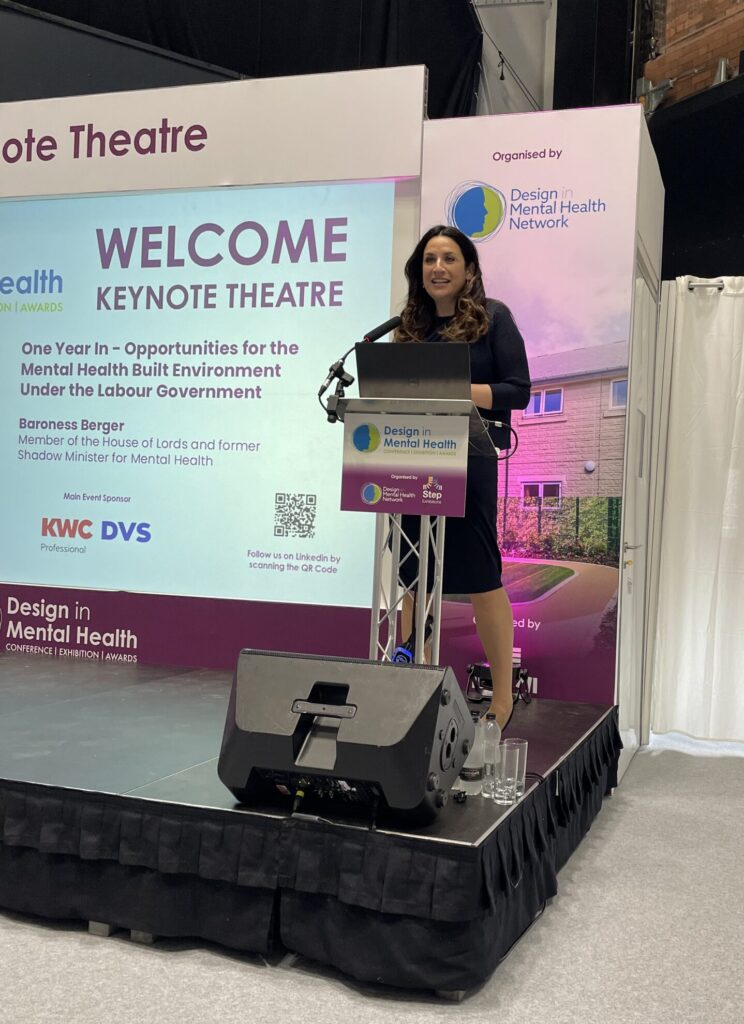
At the Heart of the Conference: The Importance of Co-Production
At the heart of the Design in Mental Health Conference is the importance of co-production. I had the privilege of chairing the Fireside Chat between Marsha McAdam and Dr. Adrian James, who spoke candidly about the transformative impact of co-production on service delivery, relationships between staff and patients, and the built environment.

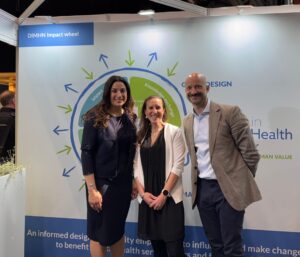
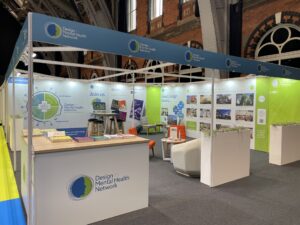

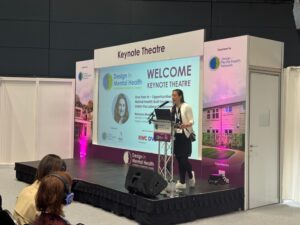
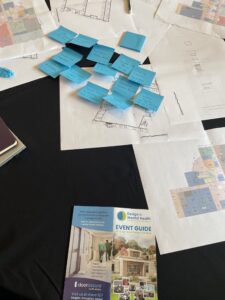


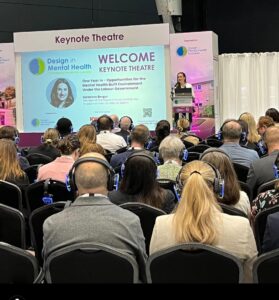
Another standout moment was Richard Barton’s session: “Who, What, Why, Where, When, How?” – Making the Most of Lived and Life Experience, chaired by DiMHN’s chair, Philip Ross. The session got honest and real about the complexities of co-production. Richard shared his journey, illustrating the opportunities that emerge when lived experience is not just included but embedded, from shaping safer environments to influencing design decisions at the earliest stages. He asked urgent questions: How can we make co-production more inclusive, measurable, and meaningful? And just as importantly, what do we miss when we don’t?
As the new CEO, one of the most insightful and rewarding aspects of stepping into this role has been getting to know our lived experience members. I want to thank them personally.
Your openness, honesty, and willingness to share your journeys have shaped my understanding of what matters. You have contributed strategically, offering challenge, wisdom, and ideas, and practically, from supporting delivery at the conference through chairing sessions to delivering workshops.
Designing for the future care we want, not the constraints we feel
While many sessions rightly surfaced the urgent challenges we face, such as ageing estates, surging need, and limited capital funding, what struck me most was the determination to do things differently.
Across both days of the conference, what we saw, heard, and shared were real-world examples of designing for the future care we want. Creative funding models, digital solutions, and new forms of community partnerships offered hopeful counterpoints to familiar constraints. These approaches weren’t theoretical; they were tangible, testable, and already making a difference. It’s clear: we can’t apply old models to fix new problems, and the DiMHN has a role to play in surfacing, amplifying, and sharing the ones that work.
And with the breadth of talent and expertise across our network, from clinicians and product designers to lived experience leaders, architects, and academics, let’s not just fix what’s broken. Let’s shape the environments people deserve.
Whether you’re creating safer products, reimagining therapeutic spaces, or building partnerships across borders, now is the time to grow our shared impact.
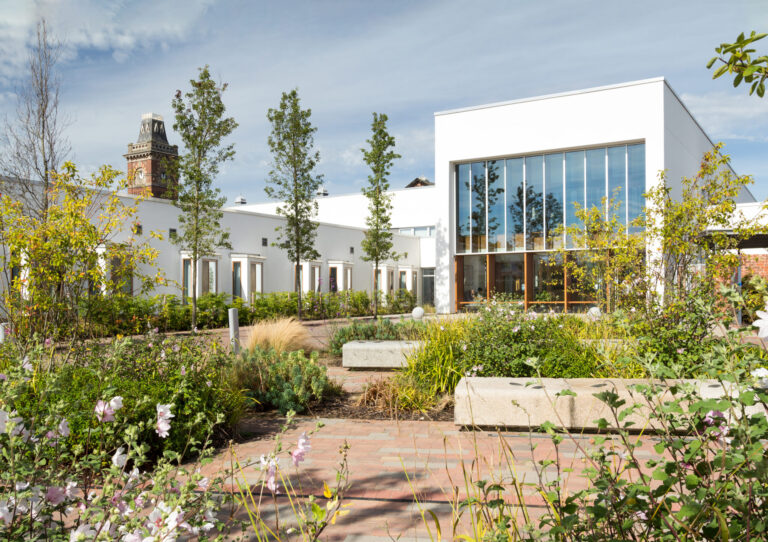
What’s Next
Coming out of the conference, we’ll be working on several workstreams:
- Deepening our stakeholder mapping to ensure all voices are reflected in our strategies.
- Developing new content formats such as podcasts, webinars, interviews, and deeper dives into the sessions we’ve just experienced. There’s a lot of work ahead here.
- Finalising our refreshed values, shaped by what we’ve learned so far.
And most importantly, we’ll be staying close to you, our community. The conference may be over, but the conversation isn’t.
If we met in person, thank you. If we didn’t, I hope we connect soon. My email is open, and my LinkedIn is engaged!
Let’s keep asking brave questions, sharing what works (and what doesn’t), and designing with purpose.



